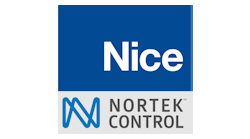Z-Wave home automation devices can be a great resource for dealers who want to offer their customers an impressive array of added convenience and the ability to change the actual look and feel of a residence or small business without having to open walls or pull new wires. Here are five things you should know when it comes to Z-Wave:
1. Most Z-Wave equipment can act as a wireless repeater for other Z-Wave equipment. This feature enables you to create a “mesh network” of Z-Wave equipment, which is especially important in larger homes or places with widely-dispersed devices. When a Z-Wave device is sent a command — either locally from a console/hub or remotely via a mobile app through the console/hub — the signal is transmitted to any devices that are in range. The devices either act on the request (if the activation request is for that device), or “repeat” (re-transmit) the message to the device that is being targeted.
2. You can install a three-way Z-Wave light switch at any in-wall powered location, and control up to five other Z-Wave switches. Using the Association Command Class feature offered with some Z-Wave systems, you could, for example, install a three-way Z-Wave switch in a second-floor bedroom that turns on the driveway, foyer and stairway lights. Thus, if the doorbell rings at night, there’s no fumbling to locate and turn on three different light switches — with Z-wave it can be done in one click.
3. Customers may have to pay a monthly service fee for remote management of a Z-Wave system. Smartphone management and activation —including scheduling, event notification and advanced logic schemes — can be important for customers. With DIY systems that do not require a contract, it is important to note that those resellers offer a “premium service plan” for advanced automation features, and only offer the most basic smartphone-activated features (i.e. on/off) free of charge. Getting the most out of a system using a smartphone will likely involve an automation services agreement. It is common for home automation providers to bundle their Z-Wave remote service program with other primary services, such as security system monitoring. Many automation panel manufacturers have a number of alternatives so dealers have choices in smartphone/remote management capability.
4. Customers may be able to buy DIY Z-Wave products and add it to the system themselves. They can, but it depends on the home automation system brand and ease of “registering” new devices to the Z-Wave console/hub. Things for DIY customers to consider include: How far away from the console/hub is the new device to be installed? If the mesh network is small, the new location may not be in range of the network, so an intermediate device may be needed. Still, all certified devices are compatible with all other Z-Wave devices.
5. Installing a Z-Wave switch or fixture is generally easy if you have past experience installing similar switches or fixtures. After you have turned off the power, installing a standard Z-Wave on/off or dimmer switch is as easy as identifying the wires in the box that are connected to the switch you are replacing, labeling each wire, then re-wiring in the new Z-Wave switch using proper wiring practices, and following the diagram in the instruction sheet provided. Once installed and even before it is programmed, the new Z-Wave switch should operate using the switch paddle, just like a regular switch does. But until it is “registered” with the Z-Wave console/hub, it will not be able to be controlled by smartphones, or a command initiated at the controller/hub.
Larry North is director of marketing for Linear. To request more info about the company, please visit www.securityinfowatch.com/10215766. Linear offers free Z-Wave installation training videos available at www.learnlinear.com.



